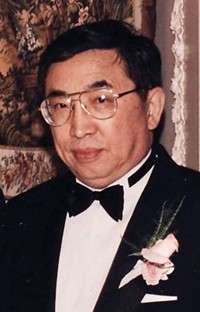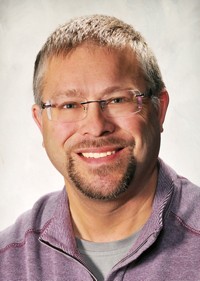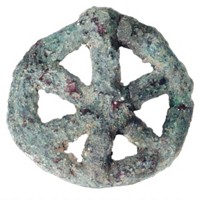Advertisement
Grab your lab coat. Let's get started
Welcome!
Welcome!
Create an account below to get 6 C&EN articles per month, receive newsletters and more - all free.
It seems this is your first time logging in online. Please enter the following information to continue.
As an ACS member you automatically get access to this site. All we need is few more details to create your reading experience.
Not you? Sign in with a different account.
Not you? Sign in with a different account.
ERROR 1
ERROR 1
ERROR 2
ERROR 2
ERROR 2
ERROR 2
ERROR 2
Password and Confirm password must match.
If you have an ACS member number, please enter it here so we can link this account to your membership. (optional)
ERROR 2
ACS values your privacy. By submitting your information, you are gaining access to C&EN and subscribing to our weekly newsletter. We use the information you provide to make your reading experience better, and we will never sell your data to third party members.
Environment
ACS Award for Team Innovation
Recipients are honored for contributions of major significance to chemistry
by Ann M. Thayer
January 28, 2008
| A version of this story appeared in
Volume 86, Issue 4
Sponsored by ACS Corporation Associates
Scientists Stanley B. Collins and Scott R. Culler of 3M Corp. are being recognized for their leadership in helping make the ordinary become extraordinary. Innovatively rethinking a century-old product, they led a company team to create a new sandpaper design that performs better and has lower environmental impact than the archetypal version.
3M's first product, launched in 1914, was an abrasive cloth. For nearly 100 years, sandpaper was produced by bonding a layer of irregularly shaped abrasive grains to a backing material in a multistep, solvent-based process. The 3M team, however, invented a new structured abrasive with unique properties. It also developed a new production process that combines the abrasive and bonding resins in a slurry, which is then coated on a backing material and cured in one step.
The design drew on Collins' expertise in microreplication, arising from his work in 3M's Optical Technology Center, and Culler's in composite formulation and radiation curing, developed in the company's dental products business. And it capitalized on Culler's expertise in product development and ability to identify, understand, and meet customers' needs.
According to their 3M colleagues, Collins and Culler built an extraordinary team with a core group of about 25 people from nine different laboratories. They brought in other contributors as needed to provide information on formulation, manufacturing, tooling, quality, marketing, and nanomaterials. The team was known for its enthusiasm and diligence.
"Collins' nontraditional view of sandpaper was critical, because it gave permission to do things in a new way," a 3M colleague says. Microreplication involves reproducing a three-dimensional microstructure millions of times in a precise pattern. The sandpaper effort applied this technology to an entirely new area in a revolutionary way, more than one 3M manager remarks.
Nevertheless, the team had to meet practical requirements in terms of product consistency, life, and performance. And it decided that the product needed to be manufactured in one step, using 100% solids for minimal environmental impact.
To this end, Culler recognized that the chemical formulation and manufacturing processes had to be integrated. He developed a formulation that incorporated the precisely shaped abrasive mineral, grinding aid, and bonding resins into a single slurry. Colleagues then worked with him to develop a one-step, radiation-cured, sustainable manufacturing process.
The result was a production process that does not require ozone-depleting solvents and does not produce substances found in conventional curing processes. According to the company, emissions are so low that the environmental impact is negligible. 3M also notes that the process does not require EPA permits and special equipment, which is in marked contrast to traditional abrasives manufacturing.
After all its efforts, the team introduced the first structured abrasive ahead of schedule; the product line today is named Trizact Abrasives. The abrasive mineral can take almost any 3-D geometric shape, including pyramids, hemispheres, or cubes. Defined particle shapes and the precise placement of the abrasive on a variety of backing materials provide specific grinding performance, which can be modified to meet customers' needs in a range of industrial applications.
By the end of the project, nearly 100 people had contributed in some way. As of 2006, 43 patents had been issued naming 13 primary inventors and a total of 33 investigators. Within 3M, the Trizact Abrasives team has been recognized with multiple awards, including the Chairman's Environmental Leadership Award in 1995, the New Horizons Award in 1996, and the Process Development Team Award in 1997.
Collins, 67, received a Ph.D. in chemical engineering in 1967 from Oregon State University, Corvallis. Throughout his 35-year career with 3M, he worked in several different laboratories with increasing technical and leadership responsibilities. He retired from 3M as a division scientist in 2002.
Culler, 49, received a doctorate in engineering of macromolecular science from Case Western Reserve University in 1985. He began his professional career at 3M in 1984 and was named a division scientist in 1999. His more than 20 years of product research and development work has resulted in at least $600 million in product sales.
The award address will be presented before the Division of Industrial & Engineering Chemistry.







Join the conversation
Contact the reporter
Submit a Letter to the Editor for publication
Engage with us on Twitter